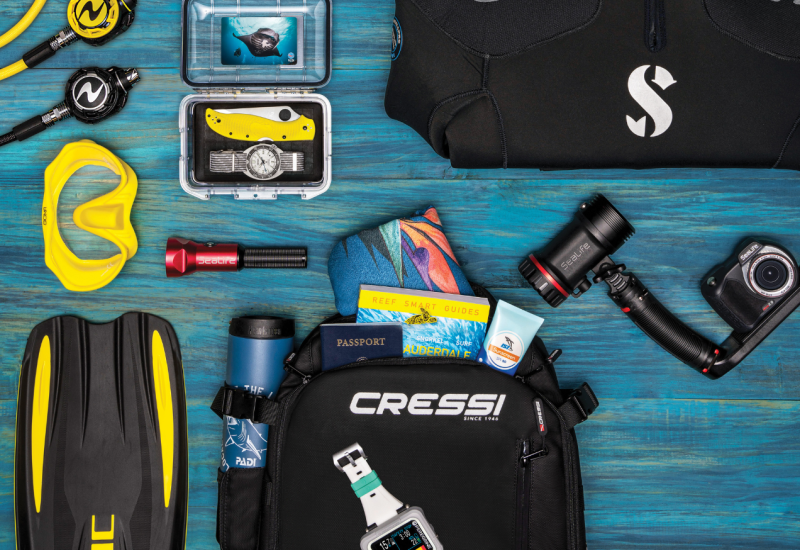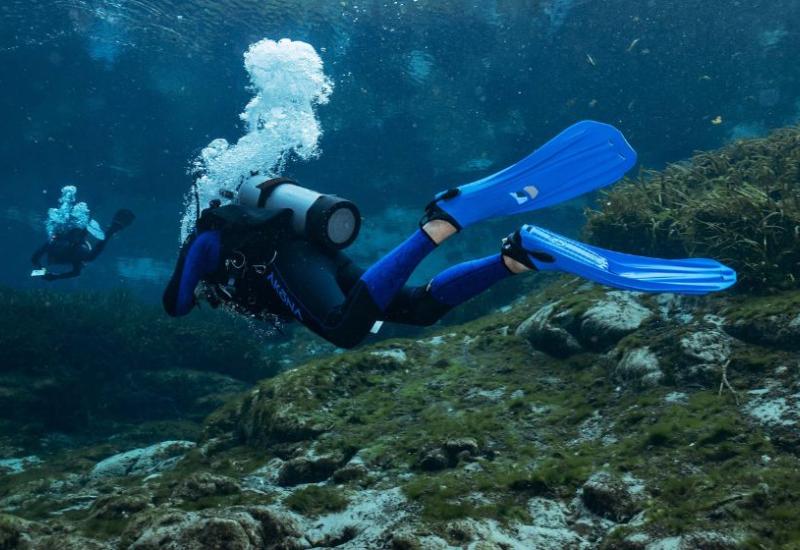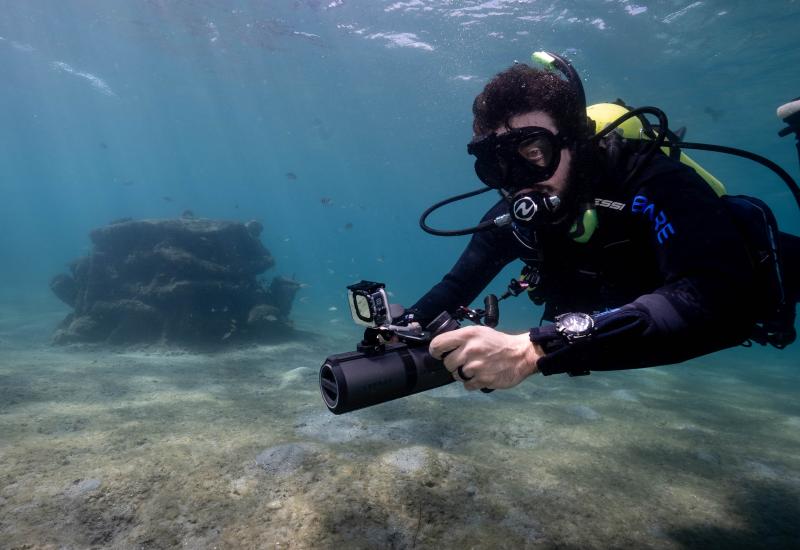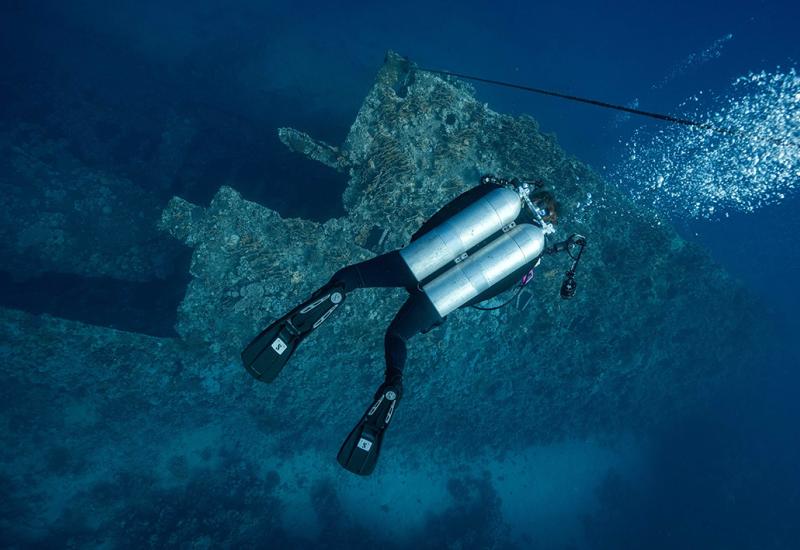If the Mask Fits...

Understanding Dive Mask Features
Carrie Garcia
Choosing a mask is all about comfort. However, once you find a few models that fit, you should take these features into consideration to help you choose the mask that's right for you:
Frameless versus Full Frame
“Frameless has become a bit of a misnomer,” says Brad Lally, Scubapro’s global product director. One of the market’s first, the Scubapro Frameless mask features glass bonded directly to the skirt, which reduces volume and increases field of vision. At the time, the technology was new and complicated, and thus costly.
Now, many masks feature skirts that have been bonded to subframes, adding durability. An extra benefit of these semiframeless masks, as well as frameless masks, is that they will not break if packed poorly in a dive bag or if something falls on them.
Buckle Attachment Points: Skirt versus Frame
Facing airlines’ increasing bag fees, gear manufacturers have been crafting masks that fold flat, made possible by buckles that attach to the flexible skirt. This design is also less likely to crack. Buckles attached to a frame connect at almost a 90-degree angle. This rigid point is where most masks often break.
With buckles attached to the skirt, “you can move, pull and tug them without compromising the frame of mask,” says Kaleb Knight, sales executive at IST. This style also allows more options of where the mask rests on your face, increasing the odds of a good fit.
Although it may seem that this style could snap if under too much stress, Knight points out that these masks have been engineered to resist this kind of abuse. It has been accounted for in the mold that created the mask, with more rigidity applied to that connection spot.
Mirrored and Amber Lenses
“Mirrored lenses are like sunglasses,” says Jill Riffe, CFO of Riffe. “They prevent fish from watching your eyes.” Riffe says the lenses work best in clear conditions, and should be avoided in poor visibility.
However, you don’t need to be a spearfisherman to benefit. In shallow, bright conditions, the mirrored coating reduces — nearly eliminates — backscatter. And for those who prefer a filtered-style lens, this option provides additional eye comfort.
The mirrored coating is applied through electronic transfer — the same process used to create sunglasses and high-end swim goggles. The coating (a blend of titanium, silicone and aluminum dioxides) bonds directly to the glass. Long-term tests conducted by Scubapro have shown that the coating won’t wear off with time, and doesn’t require any special treatment from the owner.
Amber lenses are another option. These lenses act like a camera lens filter — by increasing contrast. Hunters also use this same concept to help the eye distinguish shapes.
What are the benefits? Fish appear in sharper detail. The lenses provide truer color underwater. Plus, they increase the wearer’s vision in low-visibility water because of the added contrast.
Anti-Fogging Treatments
Cressi, Riffe and other manufacturers have started using a unique heat treatment that prevents gas-off, aka what causes fogging to occur. Silicone skirts naturally de-gas while worn, especially if the mask is new.
Riffe offers optional add-on lenses, the Mantis and Mantis-5, which have been crafted to prevent fogging thanks to a special coating.
Crystal Silicone Skirts
The telltale sign of a well-loved mask — if the skirt is clear — is a yellowed color after years of use. Cressi has recently introduced a crystal silicone skirt in masks such as the Big Eyes Evolution and the Eyes Evolution masks.
“The skirt looks invisible,” says Mike Terranova, trade marketing manager at Cressi. Not only will the material never yellow, it also makes anti-fog solution redundant. An added bonus? “These masks hug your smile lines closer,” Terranova says. “Laugh all you want in the water — this mask won’t leak.”
Silicone versus PVC Skirts
By all means, choose a silicone skirt, advises Brad Lally, global product director at Scubapro. PVC is a much stiffer material, which won’t provide the comfort divers expect. PVC’s appeal is the low price. Spend the money now, and be guaranteed a hassle-free experience in the water. After all, when you consider that most two-tank dive trips cost around $80, you’ll quickly see a return on your investment.
HOW A MASK IS MADE
The process begins when silicone is injected into molds to create the skirts. A worker or robot pulls the skirt off the mold, and trims away excess material. In another part of the factory, laser-etching or water-jet machines cut the lenses from huge sheets of glass. A tempering process heats and cools the mask to prevent shattering. Final details are added, and after the masks pass a quality control test, they are shipped out.
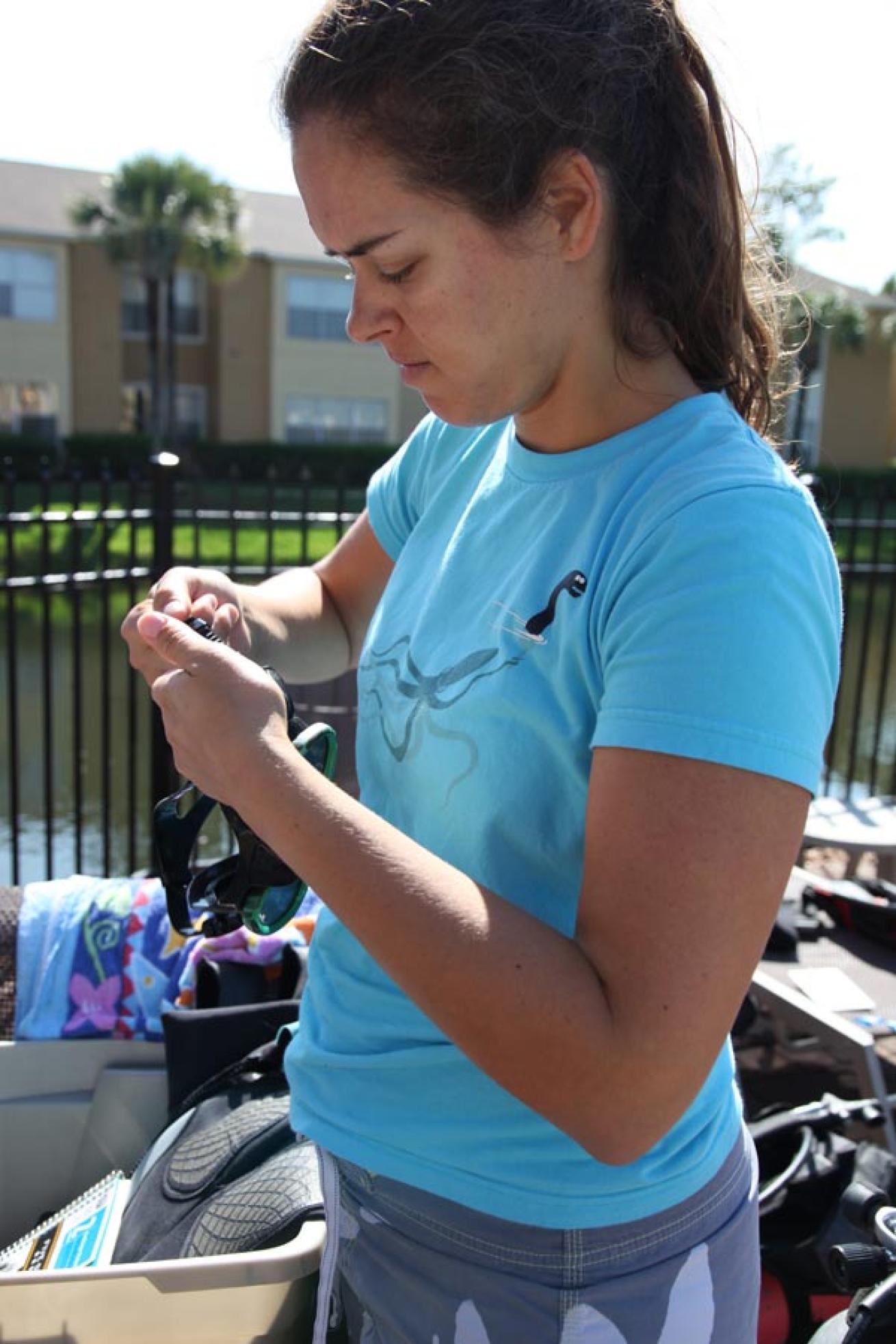
Carrie Garcia
Choosing a mask is all about comfort. However, once you find a few models that fit, you should take these features into consideration to help you choose the mask that's right for you:
Frameless versus Full Frame
“Frameless has become a bit of a misnomer,” says Brad Lally, Scubapro’s global product director. One of the market’s first, the Scubapro Frameless mask features glass bonded directly to the skirt, which reduces volume and increases field of vision. At the time, the technology was new and complicated, and thus costly.
Now, many masks feature skirts that have been bonded to subframes, adding durability. An extra benefit of these semiframeless masks, as well as frameless masks, is that they will not break if packed poorly in a dive bag or if something falls on them.
Buckle Attachment Points: Skirt versus Frame
Facing airlines’ increasing bag fees, gear manufacturers have been crafting masks that fold flat, made possible by buckles that attach to the flexible skirt. This design is also less likely to crack. Buckles attached to a frame connect at almost a 90-degree angle. This rigid point is where most masks often break.
With buckles attached to the skirt, “you can move, pull and tug them without compromising the frame of mask,” says Kaleb Knight, sales executive at IST. This style also allows more options of where the mask rests on your face, increasing the odds of a good fit.
Although it may seem that this style could snap if under too much stress, Knight points out that these masks have been engineered to resist this kind of abuse. It has been accounted for in the mold that created the mask, with more rigidity applied to that connection spot.
Mirrored and Amber Lenses
“Mirrored lenses are like sunglasses,” says Jill Riffe, CFO of Riffe. “They prevent fish from watching your eyes.” Riffe says the lenses work best in clear conditions, and should be avoided in poor visibility.
However, you don’t need to be a spearfisherman to benefit. In shallow, bright conditions, the mirrored coating reduces — nearly eliminates — backscatter. And for those who prefer a filtered-style lens, this option provides additional eye comfort.
The mirrored coating is applied through electronic transfer — the same process used to create sunglasses and high-end swim goggles. The coating (a blend of titanium, silicone and aluminum dioxides) bonds directly to the glass. Long-term tests conducted by Scubapro have shown that the coating won’t wear off with time, and doesn’t require any special treatment from the owner.
Amber lenses are another option. These lenses act like a camera lens filter — by increasing contrast. Hunters also use this same concept to help the eye distinguish shapes.
What are the benefits? Fish appear in sharper detail. The lenses provide truer color underwater. Plus, they increase the wearer’s vision in low-visibility water because of the added contrast.
Anti-Fogging Treatments
Cressi, Riffe and other manufacturers have started using a unique heat treatment that prevents gas-off, aka what causes fogging to occur. Silicone skirts naturally de-gas while worn, especially if the mask is new.
Riffe offers optional add-on lenses, the Mantis and Mantis-5, which have been crafted to prevent fogging thanks to a special coating.
Crystal Silicone Skirts
The telltale sign of a well-loved mask — if the skirt is clear — is a yellowed color after years of use. Cressi has recently introduced a crystal silicone skirt in masks such as the Big Eyes Evolution and the Eyes Evolution masks.
“The skirt looks invisible,” says Mike Terranova, trade marketing manager at Cressi. Not only will the material never yellow, it also makes anti-fog solution redundant. An added bonus? “These masks hug your smile lines closer,” Terranova says. “Laugh all you want in the water — this mask won’t leak.”
Silicone versus PVC Skirts
By all means, choose a silicone skirt, advises Brad Lally, global product director at Scubapro. PVC is a much stiffer material, which won’t provide the comfort divers expect. PVC’s appeal is the low price. Spend the money now, and be guaranteed a hassle-free experience in the water. After all, when you consider that most two-tank dive trips cost around $80, you’ll quickly see a return on your investment.
HOW A MASK IS MADE
The process begins when silicone is injected into molds to create the skirts. A worker or robot pulls the skirt off the mold, and trims away excess material. In another part of the factory, laser-etching or water-jet machines cut the lenses from huge sheets of glass. A tempering process heats and cools the mask to prevent shattering. Final details are added, and after the masks pass a quality control test, they are shipped out.

